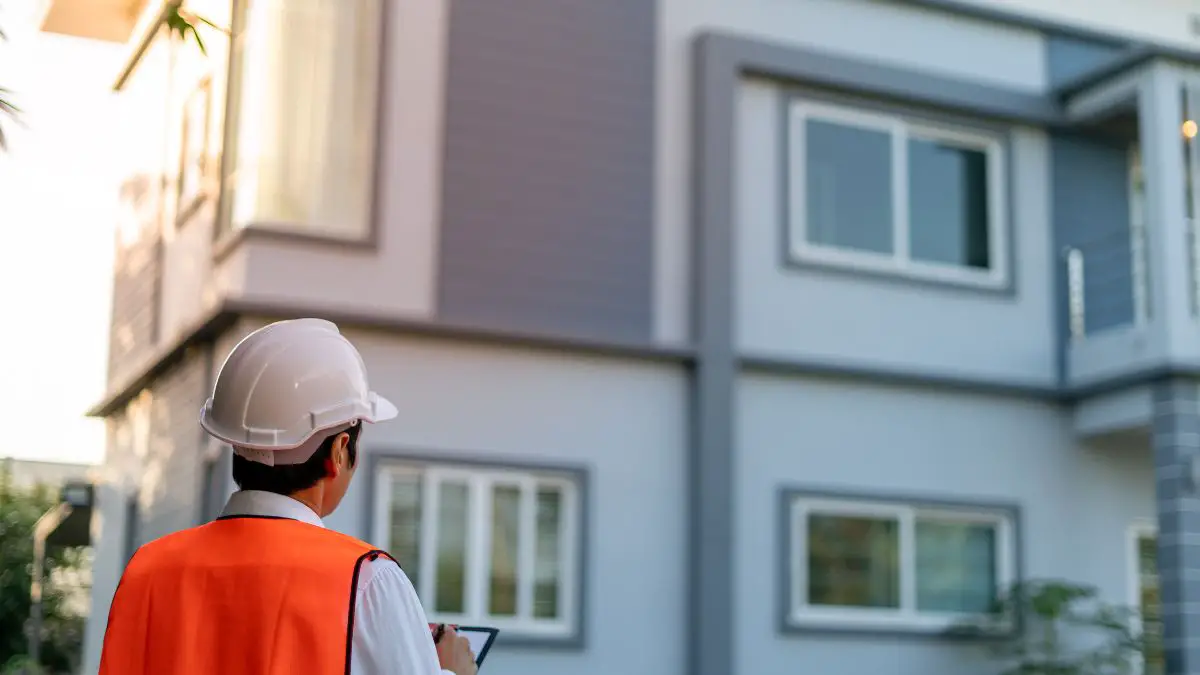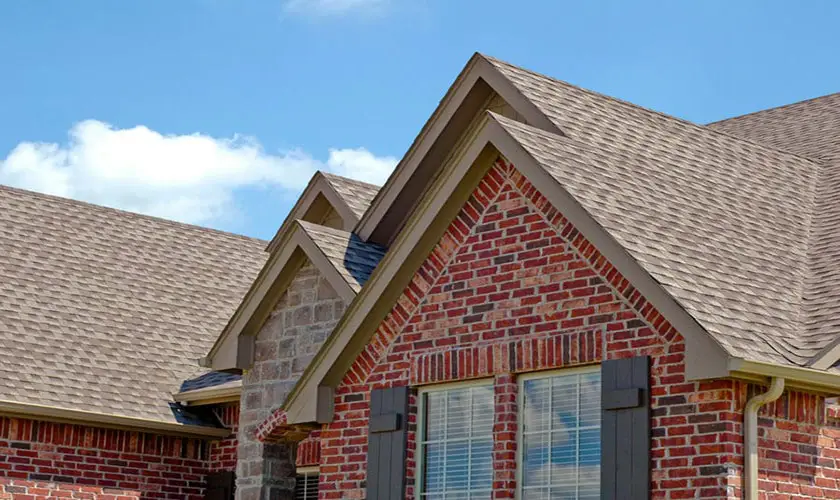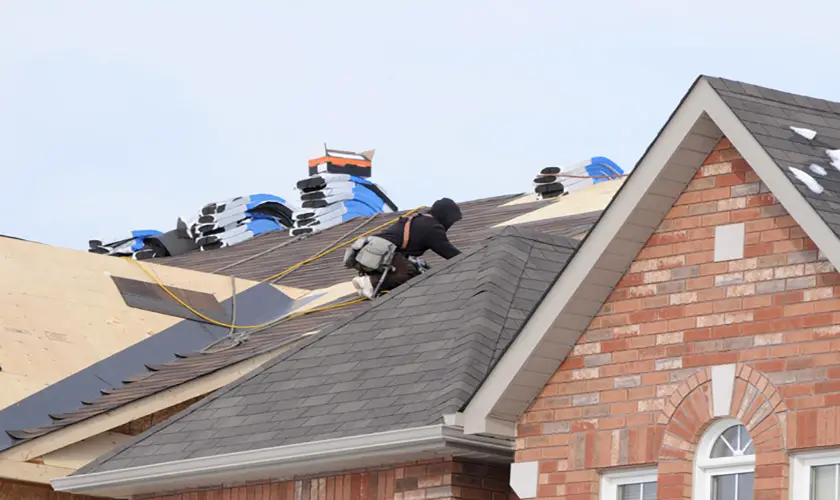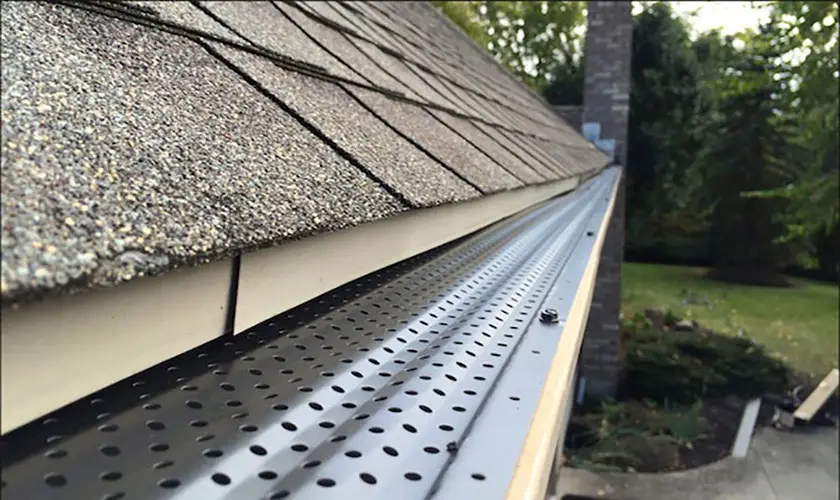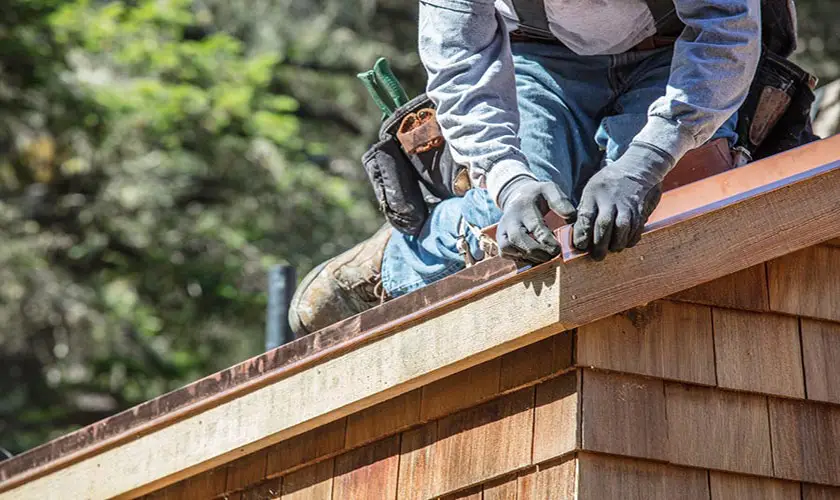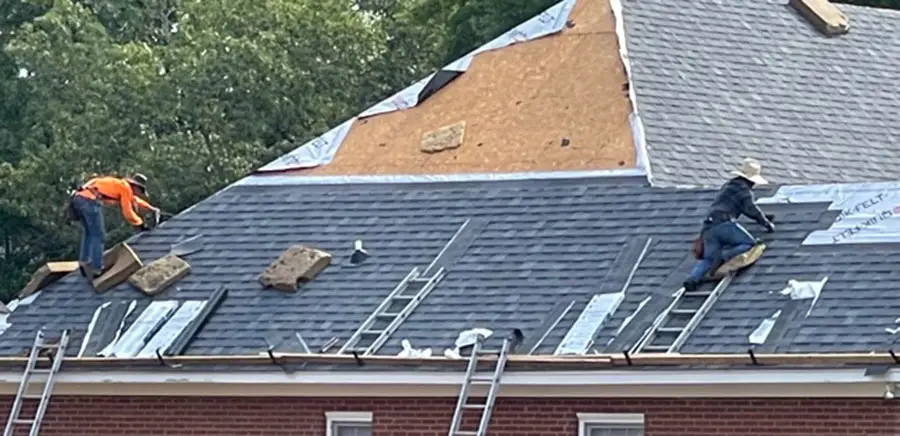
Gutters are an essential part of your roofing system. They protect the structural foundation of your home by diverting water away from the house’s walls. But do gutters need removal when replacing a roof?
Ideally, gutters need to be removed during the roofing process. According to roofing experts, removing the gutters offers you a better understanding of the scope of potential problems with the roof. Also, with the gutters off, you can install the roof properly with drip edge flashings and cleanse the edges.
Here are three reasons why you need to remove the gutters when roofing.
Recommended Reading: Are Gutter Guards Worth It or a Waste of Money? We Ask the Pros
Proper Removal and Installation of the New Roof
If your gutters are attached to the roof, it is impossible to re-roof without removing the gutters. You must remove the gutters to remove the roof.
Leaving the gutters in place may mean you cannot replace the sections where they attach to the roof. Also, removing the gutters lets you install accessories like water and ice shields and underlayments properly.
Some roofs, especially old shingle ones, may require the roofers to tear off the entire roof and replace everything.
To Avoid Damaging the Gutters
As the roof installers remove the old shingles, they may damage the gutters. The damage may also occur as the new shingles are installed.
Workers will also likely damage your gutters as they bring roofing materials onto the roof. The gutters will suffer dents that cause them to be less effective and scratches that look unsightly.
That could present an added cost of replacing the damaged gutters, not to mention making you liable for any injury to the workers from the damaged gutters.
For Proper Re-installation of the Gutters
Removing the gutters lets you replace them properly to fit the new roof. Gutter installers will ensure that the gutters are installed with the proper pitch to the new roof.
When the gutters do not have the right pitch, they leak and damage the roof, fascia, and the rest of the house. As a result, you encounter problems like water pooling at the foundation, wood rot, and roofing problems, even on recently installed roofs.
Removing the gutters also helps determine whether they need replacing because of wear and tear.
Hang On! Some Roofers Leave Gutters While Roofing: Why?
It is possible to keep the gutters in place when replacing a roof. That can work if the gutters are not in the way of the roof installation.
Some gutter installers prefer to place a fascia board underneath the roof and attach the gutters to the board instead of directly to the roof.
If that is the case with your roof, you can replace the roof without interfering with the gutter system because they are not directly connected to the old roof.
Some roofers also prefer to leave the gutters in place, especially if they are in good condition.
The contractors will do everything in their power to avoid damaging the gutters, including:
- Avoid leaning ladders on gutters.
- Covering them up.
- Mitigate human traffic in that section.
Should You Clean Your Gutters Before Roof Replacement?
If the roofing crew intends to leave the gutters on, they will clean them before and after the roofing process. The roofers will begin by tearing off the old roof, which means debris and pieces will fall onto the gutters.
The crew will clean the gutters by hand and then use a leaf blower to remove any fine debris that may linger. The crew must work in a clean and clear environment. After the roof installation, they will clean the gutters again to leave them clear and effective.
There are two reasons behind cleaning the gutters at the beginning:
To Expose Any Issues That May Exist Behind the Gutters
Any structural damage to the edges of the roof or the gutters themselves can only be seen when they and the surrounding sections are clean.
Cleaning the gutters helps the crew pick up on potential problems with sealing the edges of the roof or structural damage that has already occurred that may affect the roofing process.
For example, an animal may have damaged the roof and gutters, but leaves and debris hide the extent of the damage. Clearing the gutter and roof exposes the problem.
To Prevent Injury to Workers Installing the New Roof
Imagine walking blindfolded on a tightrope above high-rise buildings. You have to rely on feeling your way on the rope, which increases your chances of falling.
To navigate a dirty roof and gutter, the roofing crew has to feel their way around. That increases the chances of falling and hurting themselves on the job.
Cleaning after roofing is to leave your roof and gutters clean. It is excellent work etiquette to leave your job site clean and neat for the client.
What to Expect During Gutter Removal for Roofing
The roofing crew will examine your gutters to determine what was used to fasten them to the roof. That could be screws, rivets, or nails. They will use a hammer for the nails, a drill for the rivets, and a screwdriver for the screws.
Using the right tools during removal is essential to avoid damage to the gutters. After all, you will replace them once the roofing is done.
The downspouts are the first to come down. Downspouts tend to be heavy and can drag the gutters down, damaging them. That is why the crew must remove them first.
After the downspout is safely removed, disconnect the brackets (or any other mounting hardware) holding the gutters against the roof.
Gutter removal is a two-person job. One person will unfasten the components of the gutter, and the other will hold them stable during the unfastening process. It is best to leave it to the roofing crew to do it.
Once the roofing is done, the gutter installation crew will put the downspout and gutter back in place to fit the new roof correctly.
Final Word
Any roofing contractor worth their salt will explain why they will or will not remove the gutters when replacing the roof. Depending on the state of your gutters, they may leave them on or remove them. That means it is not cast in stone that the gutters will stay or come off. It is the contractor’s judgment call.



